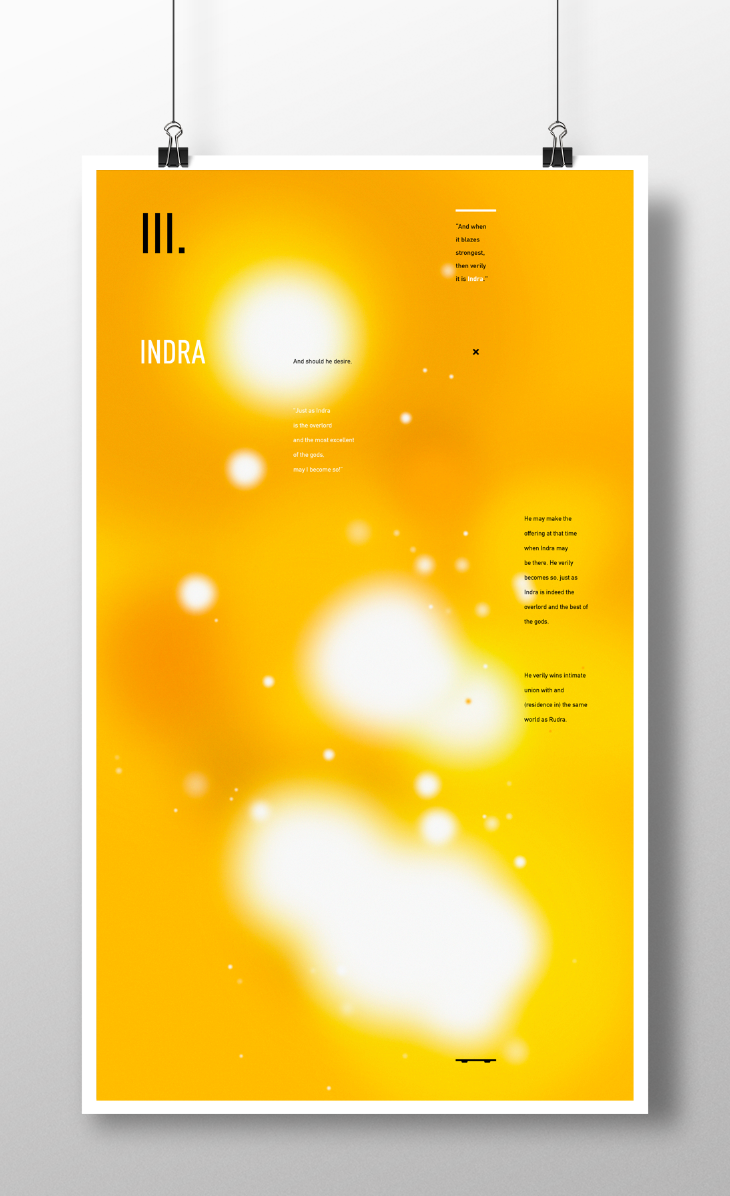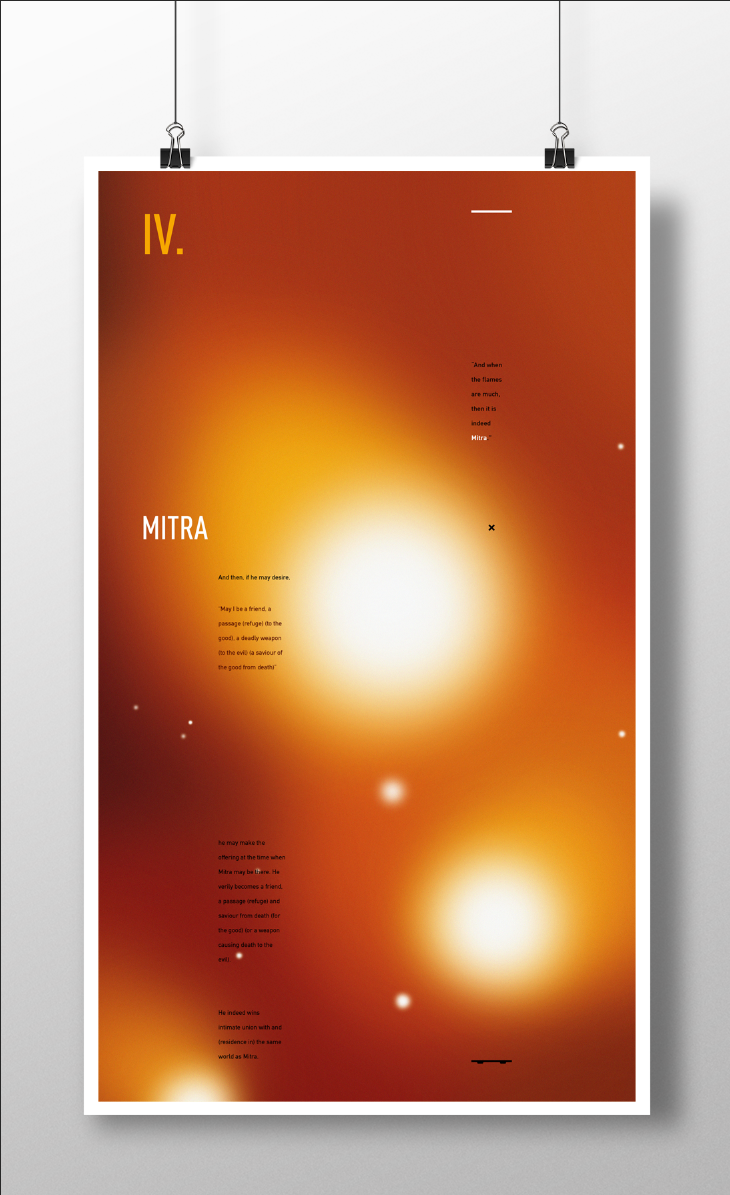An interpretation of the five phases associated to the birth and developing of the fire in the rituality during the Agnihotra (fire sacrifice) in the Brahmanic tradition. Phases that in an universal analogy follow such systems that, after an initial perturbation event and a central climax, are back to balance.
This archetypical entities keeps their nature of singular divinities, but they are projected in an ideal space, becoming frames of moments in the continuous flow, toward the resolve of an imbalanced system.
This archetypical entities keeps their nature of singular divinities, but they are projected in an ideal space, becoming frames of moments in the continuous flow, toward the resolve of an imbalanced system.
The blur is a semantic oxymoron: the fire not in focus. Overlapped to it there is a symbolic reading scheme, three elements that complete the scenery, the altar, the sky and a cursor, point of tension between sky and earth, metaphor of the offer that once burned, rises toward its destination, abode of the deity. Reached the vertex, it glides slowly to the center finding the balance between divine and earthly condition.

“When it blazes well, first having produced much smoke,
then surely it is Varuna.”

"And when it becomes greatly blazing,
but blowing downward, as it were,
then surely is Rudra.”

“And when it blazes strongest,
then verily it is Indra.”

“And when the flames are much,
then it is indeed Mitra.”

“But when the live cinders seem to glisten, that is surely Brahman.”







